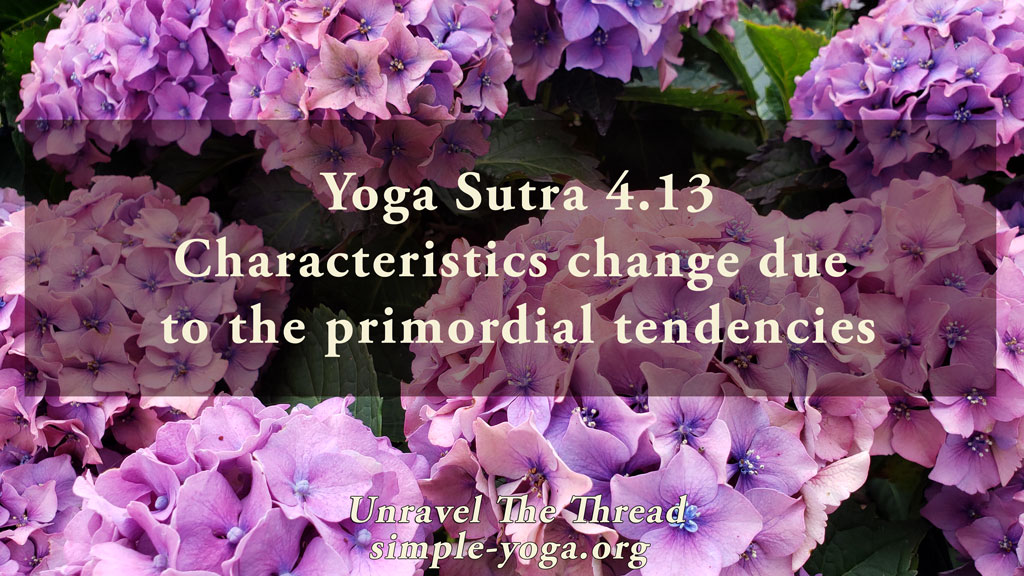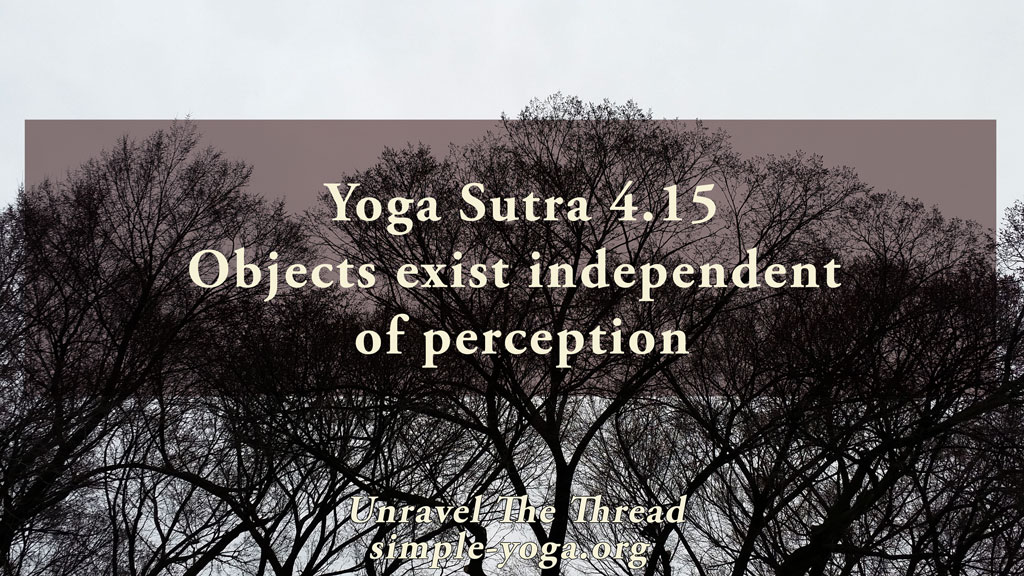
4.13 Characteristics change due to primordial tendencies.
August 29, 2022
4.15 Objects exist independent of being perceived
September 12, 2022
4.13 Characteristics change due to primordial tendencies.
August 29, 2022
4.15 Objects exist independent of being perceived
September 12, 20224.14 Each unique object is real

4.14 Although undergoing constant change, each unique object is real.
This and the following sutras ascertain one perspective on the world, existence, and perception according to Yoga from Patañjali’s point of view. There have always been competing ideas about the world and how it works.
Is the world real, or is it a figment of your imagination?
Just like the seemingly real scenes from a dream disappear when you wake up, is it possible that the experiences you have during your awake state are imaginary because they seem to disappear while you are dreaming?
Is being awake more real than dreaming?
Some people have argued that only that which can be experienced through the senses is real, while others argue that everything that exists is an illusion. These ideas regarding the world and its perception will influence what you focus on. No matter how thorough your way of thinking about the world, it is by necessity incomplete, because life in its diverse complexity cannot be encompassed fully in the mind. However, the framework you choose to interpret the world is a useful tool to try to make sense of your experiences, of yourself and of your life. Even with a well-established theory about the world and how it works, there are many aspects that may not be explained satisfactorily for everybody.
In this group of sutras Patañjali offers a yogic explanation of reality, according to which everything in nature is subject to the constant interaction between the three different tendencies mentioned in aphorisms 2.15, 2.19, and 4.13. These qualities are interpreted sometimes as steadiness (tamas), activity (rajas) and illumination (sattva), and other times as inertia (tamas), energy (rajas) and harmony (sattva). They can also be thought of as delusion (tamas), passion (rajas) and intelligence (sattva). These three tendencies are responsible for the changes that characterize all of life. Life is the field where these qualities interrelate. Although these tendencies interact causing constant change, there is something in each object that remains, as it was suggested in sutra 3.14. For instance, some days you feel energized and others you feel tired. Even when your activities are quite similar, it is highly likely that there are variations in your attitude, mood, and level of energy. However, is there something in you that remains the same? In the cycle between birth and death, your body is in constant change, yet there is some thread of continuity in you. No matter how much your body ages, when you look at yourself in a mirror you can still recognize that it’s you.
Regardless of how real or unreal your dreams seem to be, or how real or unreal your awake life seems to be, can you feel that you exist?
Despite all the constant changes in your sensations, emotions, and thoughts, is there some continuity in you?
What makes you aware of that continuity?
Is it possible that the continuity in you may also be changing?
Another possible avenue of exploration can be accessed through these questions:
Can you recognize that you are a unique being in the world?
Is that uniqueness what remains consistent in your experience?
Is there uniqueness in everything you can perceive?
As usual, one more way of exploring the meaning of this sutra is by chanting it.
You can choose to chant it in its traditional form with some of the words coming together:
4.14 pariṇāmaikatvāt vastutattvam
परिणामैकत्वात् वस्तुतत्त्वम् ॥१४॥
Another option is to chant each word in the sutra individually:
- pariṇāma
- ekatvāt
- vastu
- tattvam
If you prefer, you may listen to the podcast:
This is an excerpt from the book Unravel the thread: Applying the ancient wisdom of yoga to live a happy life
If you find Simple-Yoga.org and Unravel the thread useful, consider supporting my labor with a donation, you may also donate using PayPal or Venmo. Thank you!
